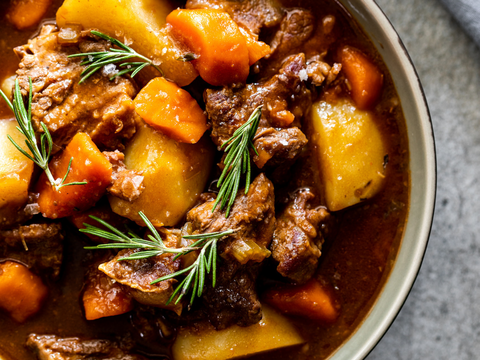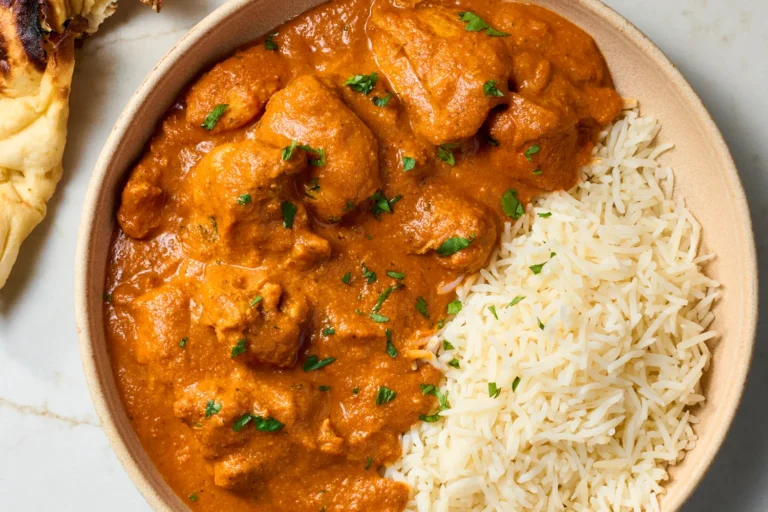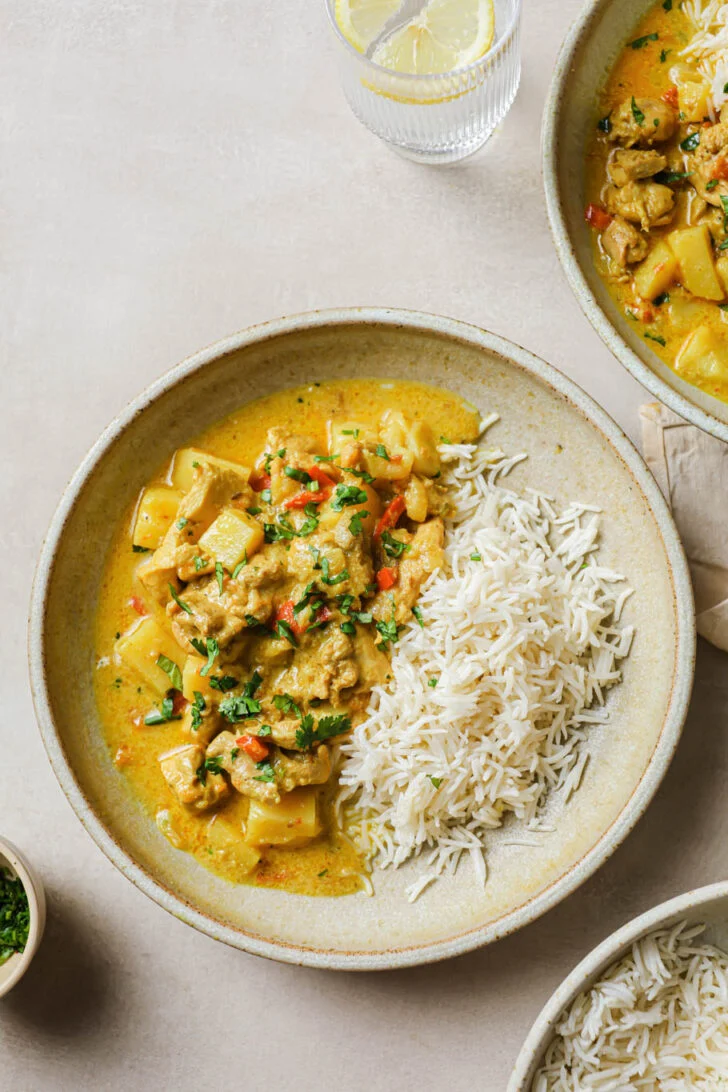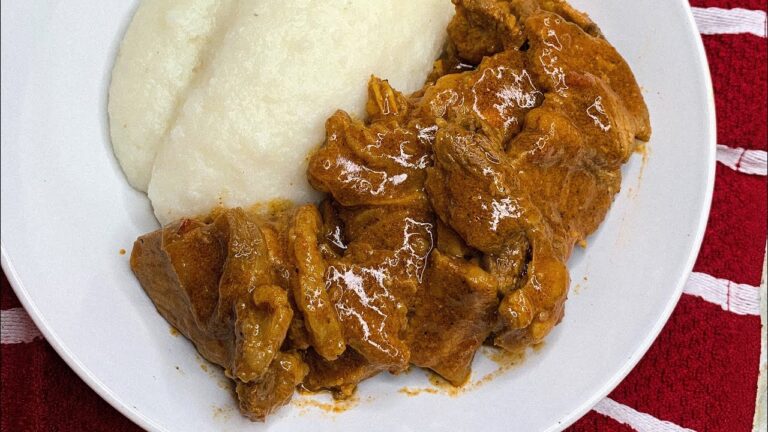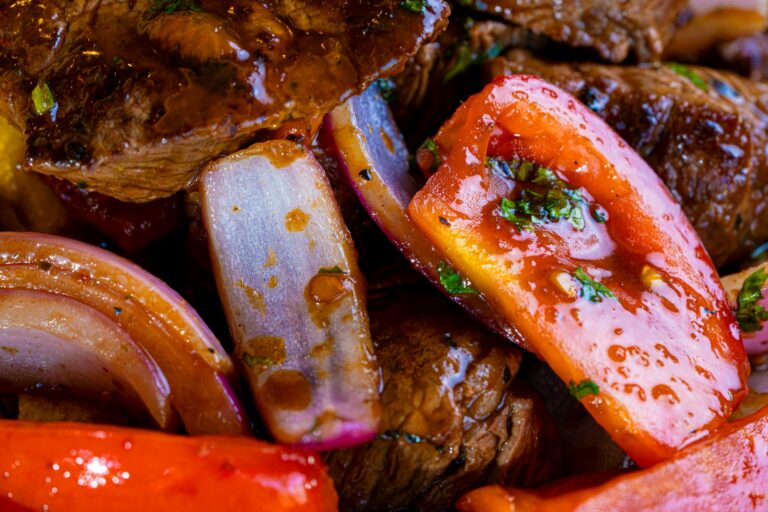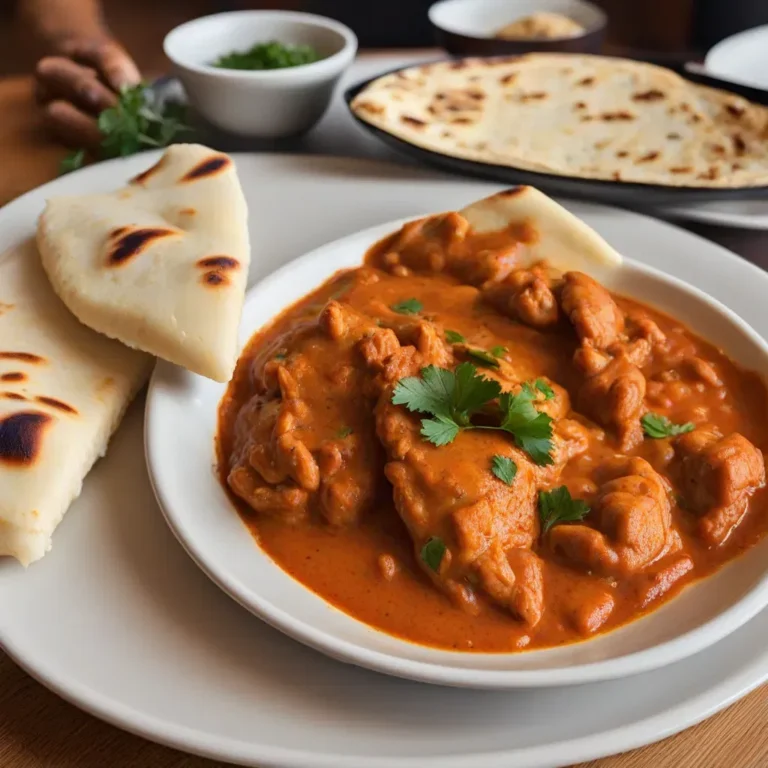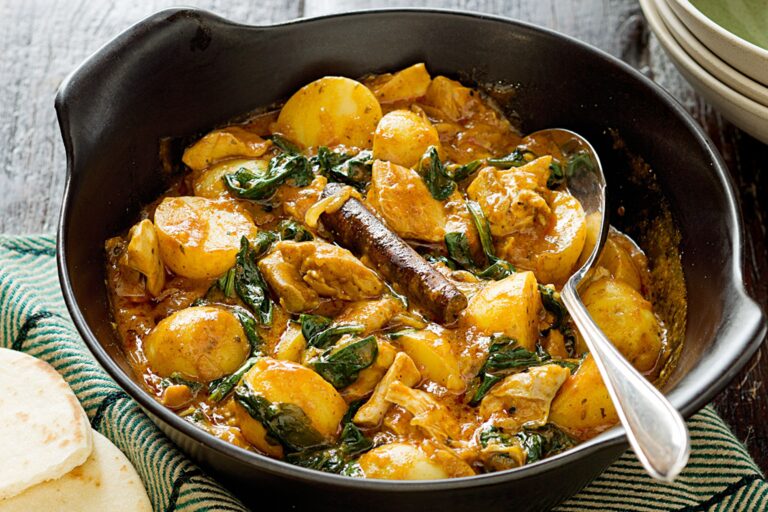Hearty Beef Stew Recipe Straight from South Africa
Introduction to South African Cuisine
Diverse Influences on South African Food
South African cuisine is a rich tapestry woven from diverse cultural influences. This culinary heritage is a blend of indigenous African traditions, colonial European flavors, and Asian spices brought by immigrants. These varying influences have created a unique food culture that is both eclectic and deeply rooted in tradition.
For instance, the indigenous Khoisan and Bantu-speaking people contributed techniques of drying and fermenting food, while Dutch, British, and French settlers introduced stews, braises, and the concept of hearty meat dishes. Asian immigrants, particularly from India and Malaysia, introduced spices and new cooking techniques, adding layers of complexity to the cuisine. Together, these influences have created a culinary landscape that reflects the country’s vibrant and diverse history.
| Influence | Contribution to Cuisine |
|---|---|
| Indigenous African | Drying, fermenting techniques |
| European | Stews, braises, hearty meat dishes |
| Asian | Spices, new cooking methods |
Importance of Traditional South African Recipes
Traditional South African recipes are an essential part of the country’s cultural heritage. These dishes are often passed down through generations, preserving not just flavors but also family histories and traditions. They embody the spirit of communal eating and the importance of sharing meals with loved ones.
One of the most cherished traditional dishes is the hearty beef stew. Known for its rich, comforting flavors, this dish is a staple in South African homes. Preparing and enjoying a hearty beef stew recipe is not just about the food itself, but also about connecting with South African heritage. Recipes like this offer a way for families to gather and celebrate their cultural identity.
Traditional recipes also play a role in South African festivals and celebrations, providing a sense of continuity and belonging. They allow home cooks to bring a piece of South Africa into their kitchens, making every meal a celebration of the country’s diverse culinary landscape.
By exploring traditional South African recipes, we honor the past while bringing delicious and comforting dishes to our tables, enriching our lives with flavors and stories from a rich cultural tapestry.
Exploring Beef Stew in South Africa
In South Africa, beef stew is a beloved comfort food, deeply rooted in the nation’s culinary traditions and history. Let’s explore the significance of this dish in South African cuisine, as well as the common ingredients that make it special.
Significance of Beef Stew in South African Cuisine
Beef stew holds a place of honor in South African food culture. This hearty dish is a staple at family gatherings, festivals, and everyday meals. Its popularity stems from its versatility and ability to bring people together over a warm, nourishing meal. South African beef stew is especially valued for its rich, savory flavors and its capacity to satisfy both the body and the soul.
The stew often serves as a medium for celebrating local produce and traditional cooking methods. Families pass down their unique recipes through generations, making it a culinary heirloom.
Common Ingredients Used in South African Beef Stew
At the heart of any authentic South African beef stew are robust, earthy ingredients that create its distinctive, hearty flavor. Here’s a look at some of the key components typically found in this dish:
| Ingredient | Quantity |
|---|---|
| Beef chunks | 2 lbs |
| Onions | 2, chopped |
| Tomatoes | 2, diced |
| Carrots | 3, sliced |
| Potatoes | 3, cubed |
| Garlic | 4 cloves, minced |
| Beef broth | 4 cups |
| Red wine | 1 cup |
| Bay leaves | 2 |
| Thyme | 1 tsp |
| Salt | To taste |
| Black pepper | To taste |
- Beef Chunks: The star of the stew, providing the main protein component and rich flavor.
- Onions and Garlic: Essential aromatics that add depth and complexity.
- Tomatoes: Bring acidity and a touch of sweetness to balance the flavors.
- Carrots and Potatoes: Common vegetables that add texture and heartiness.
- Beef Broth and Red Wine: Create a flavorful liquid base.
- Herbs and Spices: Bay leaves, thyme, salt, and black pepper enhance the overall flavor.
These ingredients come together to form a dish that is not only delicious but also reflective of South Africa’s diverse culinary heritage. For more on crafting the best beef stew recipe, explore further within our collection of hearty recipes.
Hearty Beef Stew Recipe
Experience the warmth and richness of South African cuisine with our hearty beef stew recipe. This traditional dish is perfect for families and individuals seeking comfort and flavor.
Ingredients Required
To create this delicious beef stew, you will need the following ingredients:
| Ingredients | Quantity |
|---|---|
| Beef chuck, cut into chunks | 2 lbs |
| Olive oil | 2 tbsp |
| Onion, chopped | 1 large |
| Carrots, sliced | 3 |
| Potatoes, cubed | 4 medium |
| Garlic cloves, minced | 3 |
| Beef broth | 4 cups |
| Tomato paste | 2 tbsp |
| Red wine (optional) | 1 cup |
| Bay leaves | 2 |
| Thyme | 1 tsp |
| Salt | To taste |
| Black pepper | To taste |
For more information on creating variations, visit our best beef stew recipe article.
Step-by-Step Cooking Instructions
- Preparation:
- Cut the beef chuck into chunks.
- Chop the onion, slice the carrots, and cube the potatoes.
- Mince the garlic cloves.
- Browning the Beef:
- In a large pot, heat the olive oil over medium-high heat.
- Add the beef chunks and brown them on all sides. This should take about 5-7 minutes.
- Sautéing Vegetables:
- Remove the beef from the pot and set aside.
- In the same pot, add the chopped onion and minced garlic. Sauté until the onion is translucent.
- Deglazing:
- Add the red wine (optional) to the pot, stirring to deglaze and scrape up any browned bits from the bottom of the pot.
- Combining Ingredients:
- Return the browned beef to the pot.
- Add the beef broth, tomato paste, bay leaves, thyme, salt, and black pepper.
- Stir the mixture well.
- Simmering:
- Bring the stew to a boil.
- Reduce the heat to low, cover, and let it simmer for about 1 hour, or until the beef is tender.
- Adding Vegetables:
- Add the sliced carrots and cubed potatoes to the pot.
- Continue to simmer for another 30 minutes, or until the vegetables are tender.
- Final Touches:
- Taste the stew and adjust the seasoning with salt and black pepper if needed.
- Remove the bay leaves before serving.
Your hearty beef stew is now ready to enjoy! For serving suggestions, visit our best beef stew recipe guide.
Serving and Pairing Suggestions
Once your hearty beef stew is ready, the final touches involve serving and pairing it in a way that complements its rich flavors. Here, we explore the best accompaniments and tips for presenting the perfect South African beef stew.
Ideal Accompaniments for Beef Stew
South African cuisine has a variety of side dishes that pair wonderfully with beef stew. These sides enhance the flavors and make for a complete meal.
| Accompaniment | Description |
|---|---|
| Pap | A traditional South African porridge made from ground maize, similar to polenta. It has a neutral taste that complements the hearty beef stew. |
| Boerewors | Traditional South African sausage, often grilled, and served as a side to add an extra layer of flavor. |
| Braaibroodjies | Grilled sandwiches typically filled with cheese, tomato, and onion, adding a comforting element to the meal. |
| Chakalaka | A spicy vegetable relish that provides a tangy and spicy contrast to the rich stew. |
| Savory Dumplings | Soft, steamed dumplings that soak up the delicious stew gravy. |
| Yellow Rice | Flavored with turmeric and raisins, providing a sweet and savory balance to the dish. |
Each of these accompaniments brings something unique to the table, enhancing the overall dining experience.
Tips for Serving the Perfect South African Beef Stew
To elevate your South African beef stew to the next level, consider these serving tips. They ensure the dish is presented at its finest, making it as enjoyable as possible.
**1. *Serve Hot*: Beef stew is best enjoyed hot. Ensure it is served immediately after cooking or kept warm if there is a delay.
**2. *Garnishing*: Adding fresh herbs like cilantro or parsley brightens up the dish and adds a pop of color.
**3. *Portion Control*: Serve individual portions in deep bowls, ensuring a generous amount of broth and chunks of beef to create a hearty meal.
**4. *Side Dishes Placement*: Arrange side dishes (like pap, boerewors, and chakalaka) around the main dish on the table, allowing everyone to help themselves.
**5. *Accompaniments*: Offer a variety of accompaniments to cater to different tastes, enhancing the communal dining experience.
**6. *Extra Gravy*: Provide extra gravy in a separate bowl for guests who may want additional sauce.
Implementing these tips will help in serving a beef stew that is not only delicious but also captures the essence of South African cuisine. For additional inspiration and recipes, check our best beef stew recipe.
South African Culinary Culture
South African culinary culture is deeply rooted in the tradition of sharing meals and celebrating through food.
Sharing Meals in South African Culture
In South African culture, sharing meals is more than just a way to eat; it is an essential social activity that brings families and communities together. Meals often consist of a variety of dishes, allowing everyone to enjoy the rich diversity of flavors. The hearty beef stew recipe, a beloved comfort food, is frequently featured in family gatherings, especially during colder months. It symbolizes warmth, hospitality, and a sense of togetherness.
The communal aspect of dining in South Africa can also be seen in traditional eating practices, where food is shared from a common pot. This practice is a metaphor for unity, fostering stronger bonds among those at the table. Whether it’s a simple daily meal or a festive celebration, sharing food is integral to South African life.
Festivals and Events Celebrating South African Cuisine
South Africa hosts numerous festivals and events dedicated to celebrating its rich culinary heritage. These occasions provide an excellent opportunity for the community to come together and indulge in diverse traditional dishes. For instance, the Cape Town Street Food Festival showcases a range of local delicacies, highlighting the vibrancy of South African street food culture.
Another notable event is the South African Braai Day, also known as Heritage Day. This national celebration encourages people to light up their barbecues (braais) and cook up traditional dishes, including different versions of beef stew. Families and friends gather to enjoy these flavorful meals, often prepared with authentic ingredients and age-old recipes.
These culinary events not only celebrate South African cuisine but also promote cultural heritage and unity. They provide a platform for the younger generation to learn the importance of traditional recipes and cooking techniques, ensuring that these culinary practices are passed down for years to come.
For those interested in diving deeper into traditional recipes, our best beef stew recipe provides a detailed guide on creating a hearty South African beef stew at home. By incorporating these authentic dishes into your cooking routine, you can bring a taste of South African culture to your own table.
Bringing South African Flavors to Your Table
The essence of South African cuisine is rooted in its rich cultural history and diverse influences. While cooking a hearty beef stew recipe, we can bring a taste of South Africa into our kitchens with ease. This section aims to inspire home cooks to explore traditional South African dishes and incorporate authentic ingredients into their culinary repertoire.
Inspiring Home Cooks to Try Traditional South African Recipes
South African cuisine offers a variety of traditional dishes that are both flavorful and comforting. By trying these recipes, we can experience the rich tapestry of flavors unique to this region. The hearty beef stew recipe is a perfect starting point.
Here’s why we should consider adding South African recipes to our menu:
- Flavor Depth: Traditional recipes often feature a harmonious blend of spices, herbs, and fresh ingredients that create a depth of flavor.
- Cultural Connection: Preparing these dishes allows us to connect with the heritage and culinary traditions of South Africa.
- Diverse Palate: By exploring different cuisines, we can expand our palate and enjoy a more varied diet.
Consider starting with the hearty beef stew recipe to experience the robustness that South African dishes offer. For more recipe ideas and inspiration, visit our best beef stew recipe.
Incorporating Authentic South African Ingredients into Your Cooking
Authentic South African cuisine relies on specific ingredients that bring out its distinctive taste. By incorporating some of these ingredients into our cooking, we can achieve the authentic flavors that characterize South African dishes.
Key ingredients to consider:
| Ingredient | Description | Uses |
|---|---|---|
| Boerewors | A type of sausage made from beef and spices | Grilled, stewed, or baked |
| Aromatics | Onions, garlic, and ginger used widely in South African cooking | Base for stews, curries, and sauces |
| Spices | Paprika, coriander, and cumin | Flavoring for meat, vegetables, and soups |
| Root Vegetables | Sweet potatoes and carrots often feature in stews | Adds natural sweetness and texture |
| Tomatoes | Fresh or canned, used in many recipes | Savory base for stews, sauces, and relishes |
When making a hearty beef stew, these ingredients can elevate the dish to represent the true flavors of South African cuisine. Additionally, experimenting with other traditional ingredients can further enhance the authenticity of our cooking.
By integrating these elements into our cooking, we not only honor South African culinary traditions but also enrich our dining experiences with diverse and hearty meals.

Lerato Mahlangu is a passionate South African chef, food writer, and advocate for celebrating the flavours of Mzanzi. Inspired by her roots, she shares authentic and creative recipes that honour South Africa’s culinary traditions. When she’s not in the kitchen, Lerato enjoys exploring local markets, connecting with food lovers, and celebrating the stories behind every dish.

